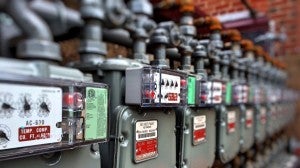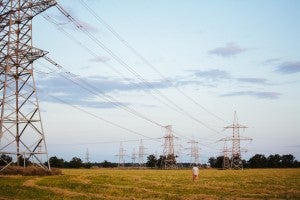
UPDATE: Since the March 2016 publication of this original blog post, the Indiana Utility Regulatory Commission (IURC) last week issued an order officially approving a settlement agreement Environmental Defense Fund, along with several other stakeholders, helped negotiate for Duke Energy’s grid modernization plan. The IURC’s order approved the settlement (details of which are outlined in the post below) without change. Now Duke Energy can proceed with the $1.4 billion plan, which will bring many clean energy benefits to Duke’s 800,000 customers.
Help is on the way to reduce harmful pollution in Indiana, which has the seventh highest level of greenhouse gas emissions in the country.
Environmental Defense Fund (EDF) joined a settlement filed this week for Duke Energy’s grid modernization plan. The settlement calls for Duke – the largest utility in the country, which serves over 800,000 Indiana households – to invest $1.4 billion over the next seven years to improve its electric grid. Doing so will deliver major benefits for Duke’s customers. Read More










 The Federal Energy Regulatory Commission (FERC) recently rejected Ohio-based utilities
The Federal Energy Regulatory Commission (FERC) recently rejected Ohio-based utilities  In extremely disappointing news, the Public Utilities Commission of Ohio (PUCO) recently approved the AEP and FirstEnergy bailout cases. By keeping old, uneconomic coal and nuclear plants running for the next eight years, the bailouts are bad for customers, bad for the environment, and bad for the competitive electric market. Even worse, customers are forced to subsidize these plants, even if they buy their power from a different supplier.
In extremely disappointing news, the Public Utilities Commission of Ohio (PUCO) recently approved the AEP and FirstEnergy bailout cases. By keeping old, uneconomic coal and nuclear plants running for the next eight years, the bailouts are bad for customers, bad for the environment, and bad for the competitive electric market. Even worse, customers are forced to subsidize these plants, even if they buy their power from a different supplier. Ohio has been busy. On the one hand, it has been
Ohio has been busy. On the one hand, it has been  Ford launched the Edsel in the late 1950’s as a new, top-of-the-line luxury car. But the project was doomed from the start because the car’s design was outdated and shunned by customers. Ford closed production after only three years, losing
Ford launched the Edsel in the late 1950’s as a new, top-of-the-line luxury car. But the project was doomed from the start because the car’s design was outdated and shunned by customers. Ford closed production after only three years, losing  Across the country, signs of a cleaner, more efficient, and more affordable U.S. energy system are emerging. But we can’t reach the clean energy future without updating the way utilities make money. Today, utilities earn revenue based on how much electricity they deliver. Companies earn less when they sell less electricity, so they have little incentive to provide energy efficiency programs for their customers.
Across the country, signs of a cleaner, more efficient, and more affordable U.S. energy system are emerging. But we can’t reach the clean energy future without updating the way utilities make money. Today, utilities earn revenue based on how much electricity they deliver. Companies earn less when they sell less electricity, so they have little incentive to provide energy efficiency programs for their customers.